By Annette Lyon
Mid-nineties: whenever I visited an LDS bookstore, I’d find the spot on the shelf where my future books belonged: right after LUND. Great spot, right?
Getting a book onto those shelves took eight years. Alphabet notwithstanding, that book wasn’t shelved after Lund’s. His books took up an entire shelf section, so stores crammed me before the big Lund on a bottom shelf. Not such a great spot after all.
No matter! As I wrote and published regularly, my shelf space would grow, and I’d eventually be more visible. Right?
Over the next decade, I had some relative successes here and there. but each was reached with what felt like far more work—knocking down or scaling brick walls—than many friends and peers put in. To this day, it’s embarrassing to admit that it took me upward of half a dozen manuscripts to get accepted by a publisher that many writers considered—and some still consider—a joke. My track record was especially embarrassing when so many friends got in on their first try.
I learned later that usually, those friends happened to submit the right thing at the right time: a new subgenre or new target audience a specific press was looking for when their manuscript arrived. That happened a lot.
If I’ve learned anything in this business, it’s that publishing is not a meritocracy and that while hard work and skill certainly matter, they won’t necessarily get you anywhere. The reality: yes, put in the hard work, and yes, hone that skill. But to be successful, you also need fairy dust—luck. That usually looks like timing or editor taste, things absolutely not in the author’s control.
Many years into my career, I introduced an incredibly talented writer friend to my then-editor, who fought to get this unknown writer published. He and I both knew she’d be a hit in the market. The publisher was skeptical—her genre was something new, and publishing, with its razor-thin profit margins, is understandably a risk-averse industry. As I suspected she would, after her first book proved successful, she rocketed to being one of the biggest stars in the LDS book market. Eventually, publishers (yes, plural) put a lot of marketing behind her because, well, they weren’t stupid.
I am thrilled with her success.
I’d also like a tiny sliver of something remotely resembling it.
She gets, unlike some in the industry, that even accounting for her amazing talent and work ethic second to none, she can’t credit her success to herself entirely.
In contrast, many colleagues point to their hard work as why they’re successful. I get it; bootstrapping is part of our culture. Deseret honeybees and all that. But many, many writers work just as hard as the “successful” ones without ever having anywhere near the same success. The difference is often that pixie dust of luck. An elusive, unpredictable thing.
When the housing bubble collapsed, publishers had to pull back on their lists. Writers like me who were unfortunate enough to have their contracted titles pushed a year more out faced long-lasting effects on their careers due to no fault of their own. Others, who kept their slots through pixie dust, shouldn’t think they dodged a bullet out of some inherent character quality or literary superiority.
When I first began writing seriously, I didn’t picture myself in the LDS market, but after a few years, those were the stories coming to me, the ones I felt driven to tell. I knew others might see that as settling, and I still planned to go national. Within the small pond of LDS publishing, I set my sights on the then-top three: Deseret Book, Bookcraft, and Covenant. I got several great rejections, including a phone call from Emily Watts, then managing editor at Deseret Book, saying my work was “a cut above” what she usually saw, but they’d have to pass because they didn’t think they could market the book.
That refrain came my way many more times about other manuscripts, until the late Valerie Holladay at Covenant, who’d repeatedly seen my submissions, invited me to lunch to talk about my work. I’d had manuscripts at final committee meetings several times, but I’d never gotten a yes. “You could be an asset to the company,” she told me, “if we can get you over the line [into an acceptance].”
That lunch conversation taught me that my work was plenty good enough. The problem was audience and marketing—I wasn’t writing as specifically toward their demographic as they were looking for. Valerie told me which of my projects she thought had the best chance from a marketing standpoint. Submit that one next, she said. She was right. That was my first published novel, though by the time it was ready to submit, she’d left the company.
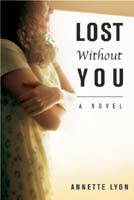 From the day Lost Without You (2002) was accepted, I continued to work my tail off, as I had been for eight years and never did stop. I had a book release roughly every year, but my workload reflected far more projects than that. Sometimes I worked on something an editor suggested. Once I spent months researching and writing something suggested by an executive, only to have the whole thing scrapped—months wasted. Meanwhile, colleagues rocketed to success with similar efforts, with the aid of pixie dust. I could never quite find any.
From the day Lost Without You (2002) was accepted, I continued to work my tail off, as I had been for eight years and never did stop. I had a book release roughly every year, but my workload reflected far more projects than that. Sometimes I worked on something an editor suggested. Once I spent months researching and writing something suggested by an executive, only to have the whole thing scrapped—months wasted. Meanwhile, colleagues rocketed to success with similar efforts, with the aid of pixie dust. I could never quite find any.
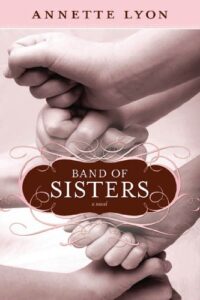 My work gradually moved away from historical and romance toward contemporary women’s fiction. My work always had a foundation of women’s fiction, but romantic plots and historical backdrops made it less obvious. Band of Sisters (2010) was straight-up women’s fiction, and comparatively dark. Taking that book on was a financial risk for a small press. Genre fiction simply sells better, and small publishers can’t lose money on books too often. That book wasn’t a giant seller, but it won a Whitney Award. To Covenant’s credit, they took the sequel, Coming Home (2013), which was also heavy.
My work gradually moved away from historical and romance toward contemporary women’s fiction. My work always had a foundation of women’s fiction, but romantic plots and historical backdrops made it less obvious. Band of Sisters (2010) was straight-up women’s fiction, and comparatively dark. Taking that book on was a financial risk for a small press. Genre fiction simply sells better, and small publishers can’t lose money on books too often. That book wasn’t a giant seller, but it won a Whitney Award. To Covenant’s credit, they took the sequel, Coming Home (2013), which was also heavy.
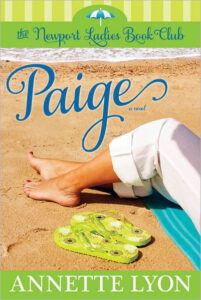 The Newport Ladies Book Club series was of another stripe: four coauthors, two sets of books that can be read in any order, with only one Latter-day Saint character in the bunch (mine, Paige, 2012). The series was women’s fiction, though some of the titles were lighter and leaned toward romance. My Ilana’s Wish (2014), which deals with prescription drug addiction, was certainly not in that category.
The Newport Ladies Book Club series was of another stripe: four coauthors, two sets of books that can be read in any order, with only one Latter-day Saint character in the bunch (mine, Paige, 2012). The series was women’s fiction, though some of the titles were lighter and leaned toward romance. My Ilana’s Wish (2014), which deals with prescription drug addiction, was certainly not in that category.
Then I felt drawn to write about my family heritage during a niche part of World War II, something darker than anything I’d attempted. Overall, my work seemed to be naturally moving away from the Latter-day Saint market expectations. Once again, my work posed marketing problems.
Maybe it was time to go national.
The thought was both exciting and terrifying. Which genre and market should I shoot for? I considered KidLit—YA or MG, which I used to picture myself writing. That could be because Utah is the galactic center of youth fiction, and I had the same influences working on me that so many others have: Latter-day Saint culture encourages talents, and stay-at-home moms can develop writing skills relatively guilt-free. We have lots of kids. We read to those kids. The result: we churn out a lot of KidLit writers.
Another source of the pull toward the KidLit market: many LDS writers were making it big on the national stage. They formed a group that only nationally published KidLit authors were allowed to join. It was Utah-specific, but in practice, of course, that meant it was mostly Latter-day Saint writers. Some LDS writers outside of Utah slipped in, too. Those were the writers who were given respect and looked upon as “real” writers by readers as well as writers.
Authors of adult fiction, even on the national stage, weren’t taken seriously unless they wrote fantasy (see: Brandon Sanderson). Supposedly the reverse is true outside of Utah, but my experience was regularly hearing KidLit writers say that they chose not to write for adults because they wanted to be true to their standards. The implication: adult fiction was automatically graphic or immoral. Many readers stayed away from adult fiction for the same reason.
Of course, YA often has sex, violence, and profanity, and lots of adult fiction could get a G-rating. That’s not how the markets were viewed. KidLit garnered respect while books for adults did not. Perhaps it’s because KidLit authors consecrate their talents in the pursuit of nurturing young minds—something far more noble than writing for grownups, right?
Many KidLit bigwigs didn’t stick with youth fiction, but because they started there, they retained the cache they’d attained: they were talented writers true to their values, writers worthy of Mormon respect.
All of this created a siren song, a need to write KidLit. It messed with my head. If I didn’t follow the KidLit route, then I wouldn’t get respect from certain circles. Did it matter if those people forever looked down on me? If they never accepted me as a “real” writer?
During all of this, I worked toward getting a national agent and publisher with that family history-inspired book. I wasn’t submitting new work to Covenant, and my old books were slowly disappearing from Deseret Book and Seagull shelves. One day, the PR director at Covenant had no idea who I was. My heart sank. If a department head of my small publisher of a dozen years and as many books didn’t know my name, then my career, such as it had been, was gone. Evaporated. Soon, readers wouldn’t know me either.
That was confirmed at Storymakers one year: two separate readers said they loved my work—but clearly knew only my novellas in the Timeless Romance collections. Those have been a fun side project, something I cofounded in 2012 with Heather B. Moore and Sarah M. Eden. I originally edited the series as well. We created it to fill a gap in the romance market, where anything “clean” was automatically religious. Our collections would be PG or PG-13 but with no religious elements. Our suspicions were correct: the collections have done very well, one hitting the USA Today list. But my novellas were never supposed to be the core of my career.
Meanwhile, my critique group of fourteen years, which had been legendary in the area, crumbled. Several other industry friendships died. Again and again, people I’d considered dear friends, people I’d met through writing, with whom I’d had synergistic relationships, were gone. In some cases, it was possibly because we no longer shared a publisher or the same publishing community. That doesn’t explain why other friendships fell apart. However it happened, what had once been a pool of warmth and support that took the solitude out of writing turned into a cold puddle of deep-seated loneliness.
Between novellas, I pushed forward with a suspense idea—women’s fiction—that I’d had for years. Twice I’d attempted it coming from different directions. Twice I’d abandoned it, maybe because no matter how “clean,” it would be for adults. No publisher’s name would make that book legitimate in the eyes of the KidLit writers. Was I okay with that? The decision was a slow and difficult one. Eventually, I decided I had to be okay with never being in the KidLit circle. Being true to myself meant writing women’s fiction. Decision made, I ignored the siren call, plowed ahead, and completed that book.
It landed me the top agent in the U.S. for thriller and suspense, Jill Marsal. I have yet to find anyone in Utah who recognizes her name. She sold the book to Scarlet, an imprint of Penzler Publishing. No one in Utah knows who that is, either, though Otto Penzler has a history and a list of awards that would make your eyes pop. (Look him up. Seriously.)
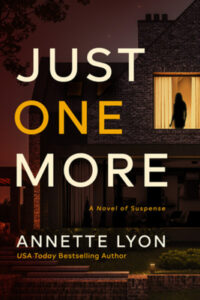 LDS-market folks certainly don’t care two figs about Just One More, my national debut (March 2023). But I’m really proud of it.
LDS-market folks certainly don’t care two figs about Just One More, my national debut (March 2023). But I’m really proud of it.
Several months after release, I attended my first-ever mystery and crime fiction convention, Bouchercon. On the last day, a fellow writer asked the name of my agent. Their response: “You are so lucky!”
Yes. Yes, I am. I know that. But I’d never seen that reaction from anyone back home. Someone outside the KidLit bubble knew her name and reputation. I was immediately respected. This person knew I must be a decent writer to be repped by Jill Marsal.
One of my last interactions at Bouchercon was a chat with a gentleman from the Mystery Writers of America. He asked if I was published. I skipped over my 20 years of niche experience and said that I had a recent release with Scarlet Books, one of Otto Penzler’s imprints.
The man’s eyes went huge, he nodded with deep respect, and said, “Wow.”
I left that conversation with tears in my eyes. I hadn’t been viewed as a “real” writer in a very long time, and even at the height of any success, it was only as a medium-to-biggish fish in a tiny pond. A pond that has forgotten me.
Bouchercon helped me feel that I do belong in publishing, even if it’s not in LDS fiction or KidLit. I’m a tiny fish in an ocean now. Yes, I’ve worked my tail off for nearly three decades. No, I don’t have nearly as much to show for it as colleagues do, including many who began their journeys a decade or two after I did. But I do belong. Even if I write creepy books for grownups.
Recently I stopped by a Seagull store to grab a gift. Out of habit, I walked past the fiction shelves to see where my books would belong. There wasn’t a single copy—before or after Lund. Not in clearance, either. It had been too long. Lund was on the bottom shelf. A friend I once mentored has a full shelf. I never did get that. The sight pinched but didn’t sting as it once did.
When I walked out, I didn’t look back. I can’t guarantee I won’t look back again; it’s human nature to reflect on the past and even question one’s decisions. There’s always a chance I’ll write for an LDS-specific audience again. I’ve learned to never say never.
For now, I’m trusting that my shift to grown-up suspense on the national market is the right path for me. I hope it brings a portion of the friendships, validation, and satisfaction I once enjoyed as part of the Covenant stable of authors.
Regardless, I’ll keep researching poisons, death, and profiling. I’ll continue to be the weirdo who writes for grownups while staying true to her standards. Whatever my career has in store, for the moment, I’ll hold tight to “You’re so lucky!” and “Wow.”
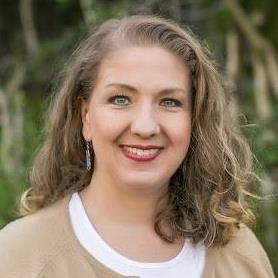 Annette Lyon is a USA Today bestseller, Whitney Award-winner, and 9-time recipient of Utah’s Best of State Medal for fiction. She’s published fiction set in the American West and the Regency and Victorian eras, though her most recent historical novel, The Girl in Gray, is set in the World War II era during the Finno-Soviet Winter War. Her first foray into suspense, Just One More, was published by Scarlet Suspense in 2023. Annette is represented by Jill Marsal of the Marsal Lyon Literary Agency.
Annette Lyon is a USA Today bestseller, Whitney Award-winner, and 9-time recipient of Utah’s Best of State Medal for fiction. She’s published fiction set in the American West and the Regency and Victorian eras, though her most recent historical novel, The Girl in Gray, is set in the World War II era during the Finno-Soviet Winter War. Her first foray into suspense, Just One More, was published by Scarlet Suspense in 2023. Annette is represented by Jill Marsal of the Marsal Lyon Literary Agency.
